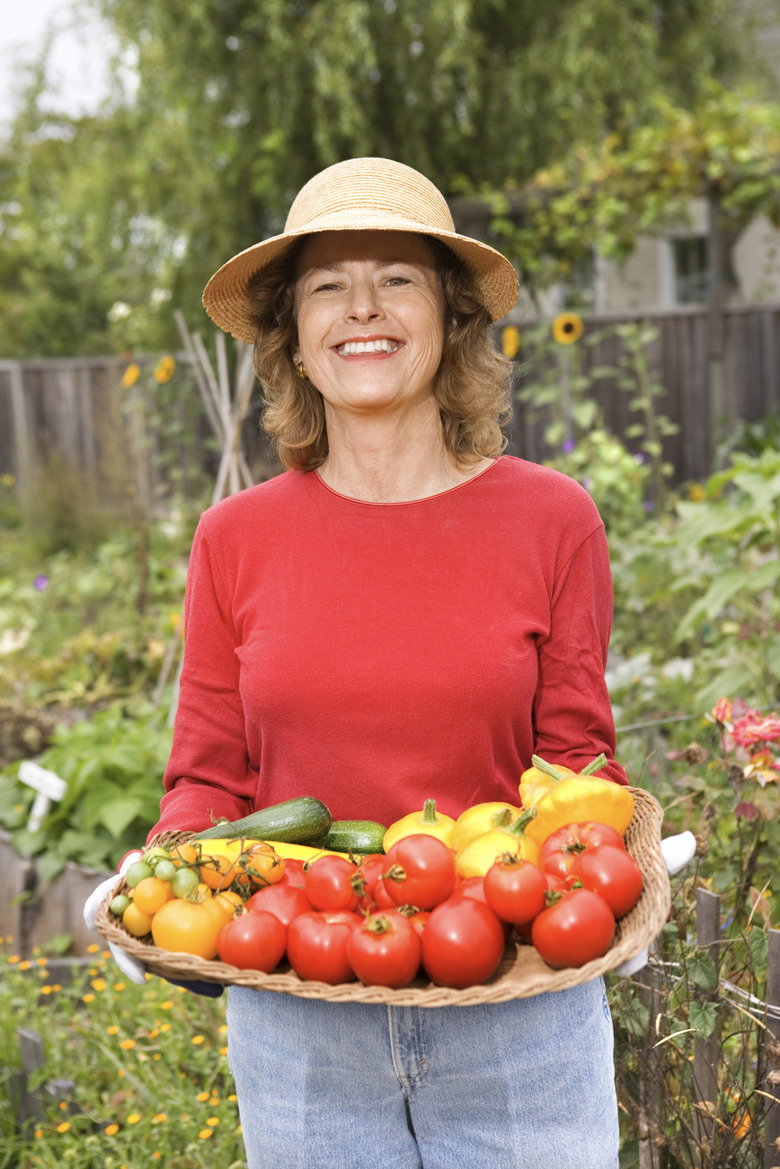Vegetables That Need Lime
Garden soils are generally described as sour (acidic), neutral or sweet (alkaline). Soil is measured on the 0 to 14 pH scale. Neutral soils measure 7.0, a measurement below 7.0 indicates acidic soil and a measurement above 7.0 is indicative of alkaline soil. Most vegetables grow in soils that measure between 6.0 and 7.5 on the pH scale. Some plants require alkaline soils and therefore need a higher level of lime or calcium to thrive.
Soil Chemistry
Acidic soils have a high number of hydrogen ions while alkaline soils are high in hydroxyl ions. Vegetables growing in the 6.0 to 7.5 optimal range are better able to absorb the nutrients required for growth. The primary minerals required by plants include nitrogen, potassium, phosphorous, calcium, sulfur and magnesium. Trace amounts of iron, zinc and copper are also needed. Plant microbes digest the nutrients and convert them into water-soluble forms that root cells are able to capture and transmit.
- Garden soils are generally described as sour (acidic), neutral or sweet (alkaline).
- Some plants require alkaline soils and therefore need a higher level of lime or calcium to thrive.
Poor Soil For Vegetables
When soils drop below a pH level of 6.0 and become overly acidic, nitrogen, phosphorous and potassium become less available for plant use. Highly alkaline soils, measuring in excess of 7.5, limit the plant's ability to absorb manganese, iron and phosphorous. Neither condition is good for your developing vegetable crop. Soil pH levels are highly variable and may be affected by rainfall amounts and temperature levels. Forest soils in heavy precipitation tend toward acidity, grasslands with light rainfall are often neutral and drought conditions increase alkalinity.
Vegetables Requiring Lime
Vegetables that thrive in highly alkaline soils ( 7.0 to 8.0 on the pH scale) include cabbage, cauliflower, okra, peppers, celery, yams and cucumber. If your soil is too acidic, add an alkaline liming material such as ground limestone. Five lbs. added to the soil in the fall will raise the pH level by one point for a garden area measuring 100 sq ft, according to the PlanTea website. Fast-acting wood ash, applied every other year at a rate of 2 pounds per 100 sq ft, is another good solution.
- When soils drop below a pH level of 6.0 and become overly acidic, nitrogen, phosphorous and potassium become less available for plant use.
Soil Testing
Garden centers are a good place to locate kits that that can test for the pH level in your garden soil. For best results, use freshly dug soil and closely follow the directions included in your kit. Some garden centers also offer rentable, portable probe/pH meters to measure your soil in situ. Many universities and colleges offer pH soil testing through local extension services at a nominal cost. Private labs can perform complete soil analyses but these more comprehensive tests can be cost prohibitive for the hobby gardener.
